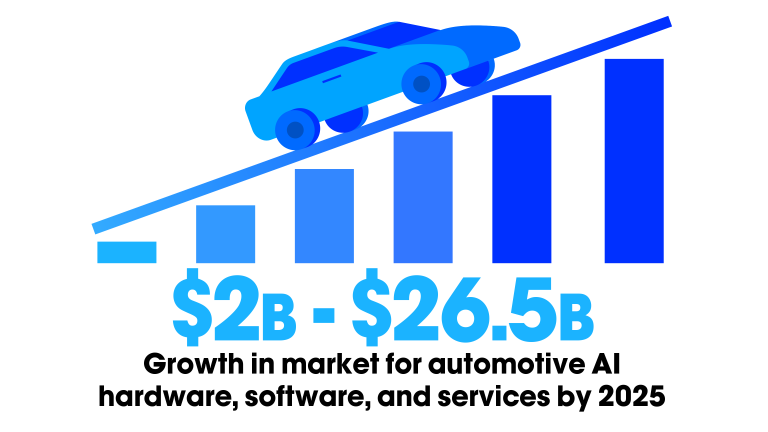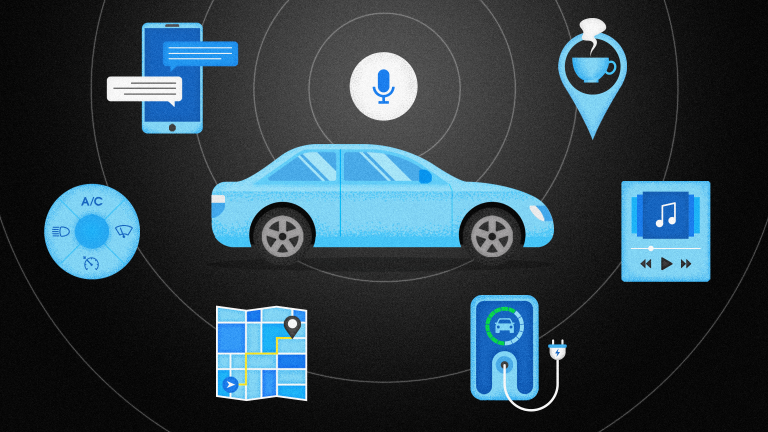Not so long ago, brands that offered voice-enabled customer experiences were seen as innovative pioneers. Often, those experiences were reserved for consumers of high-end products and not very inclusive. In a world significantly altered by a pandemic, where touching shared surfaces or sharing spaces is risky, consumers are demanding safer, healthier, contactless ways to interact with the world around them. It’s no surprise that ranking high at the top of consumer priorities is touchless voice interactions.
According to a recent study by CARAVAN®, more than half of Americans feel voice control is essential in smart devices post Covid-19. Hands-free smartphones, apps, payment screens, and TV remotes rank highest in priority, as consumers opt for voice interfaces in hopes of reducing exposure to viruses.
In the near future, it’s likely that brands that don’t provide a voice user interface will be perceived as not just behind the times, but as not caring about consumer health and safety.
Emerging voice-first industries in a post-COVID world
As we continue to shift our thinking and adjust our lives in order to safely interact with the world around us, the opportunities for voice assistants go beyond the common applications of in-home smart speakers. Organizations across industries are finding ways to use voice user interfaces to improve consumer confidence, create brand loyalty, and increase their bottom lines. In some industries, providing a voice user interface (VUI) is becoming more than a nice-to-have, it’s an imperative for future success as leading brands continue to voice-enable their products, devices, services, and mobile apps.
Let’s take a deeper dive into how 5 key industries are gaining consumer trust through the adoption of voice AI:
- Retail
- Hospitality and Restaurants
- Education
- Banking and Finance
- Healthcare
According to a recent report by Juniper Research, the growth in voice shopping will outstrip e-commerce growth between 2020 and 2024. The research firm identified the demand for voice user interfaces as well as the challenges associated with voice payment authentication and security that retailers face. Although payment security remains a challenge, the growing consumer demand for increased convenience and touchless interfaces has prompted advancements in both voice AI and payment security.
As a key player in the payments process, the banking industry is already partnering with voice AI industry leaders and others to innovate for better voice shopping experiences. Mastercard recently introduced a new suite of touchless solutions to help retailers and restaurants provide customers with more secure experiences. The Shop Anywhere platform allows retailers to deliver the frictionless, touchless experiences consumers are seeking, including:
- Secure payments
- Fast and accurate check-out
- Access to stores outside of normal opening hours
- Unique and exclusive offers
As voice AI continues to improve with advances like Speech-to-Meaning ® technology, consumer demand will force more hands-free payment systems, such as those Mastercard is rolling out. Soon, retailers without voice-enabled shopping options will risk losing consumers to brands that have a robust voice strategy.
A major shift in education
The recent pandemic has created a massive shift in how schools across the globe approach education. Online learning and remote teaching have replaced classrooms, books, and notepads. While remote learning is a necessary temporary solution, the technologies associated with e-learning experiences require good internet connections and computers in the home. While many children in the U.S. have access to these amenities, there are still a large number who don’t.
The democratization of education is possible through voice-enabled learning apps for smartphones. Even in the poorest neighborhoods, most households have at least one smartphone device. Voice-enabling learning apps ensures that every child has access to educational materials, even during strict shelter-in-place protocols.
In addition, voice-assisted learning solutions closely mimic traditional teaching methods—both listening and speaking. The phone screen adds a third learning method—sight. A voice-enabled mobile education app allows children to learn at their own speed and provides for teachable moments when lessons can be repeated or mistakes explained.
Natural Language Understanding (NLU) models are transforming the mobile app world with conversational assistants that can understand queries in a variety of ways and still deliver accurate results even in the presence of accents. These technological advances can bring learning opportunities to more children at a time where a teacher is not in the same room. No child left behind is a pledge we made years ago to the children of the US. Brands that deliver on that promise and deliver highly-accessible remote learning experiences will earn the trust of educators and their students.
Hospitality and Quick Service Restaurants (QSRs)
According to a report in Hotel Technology News, only 7% of hoteliers reported having a voice strategy in place prior to the pandemic, 59% of those same respondents felt that voice assistants would increase property reviews, and 43% believed voice AI could reduce labor costs and streamline operations.
During that same period, MDR Group and Progressive Insights reported that 64% of Americans were interested in ordering food via a voice assistant. Since that time, we’ve seen quick service restaurants adopt voice assistants to help with food ordering in their drive-thrus. As part of their frictionless ordering of payment systems for retail, Mastercard also announced AI Powered Drive Through solutions to deliver low-touch, high-engagement experiences for quick service restaurants (QSRs) and their customers. The systems are scheduled to debut in White Caste and Sonic drive-thrus this fall.
Opportunities for touchless interactions in hospitality and restaurants include:
- Voice-enabled kiosks
- Check in/Check out
- Ordering
- Drive Through
- Special requests
- Smart hotel rooms
- Smart speakers
- Smart TV and entertainment systems
- Voice-embedded devices (thermostats, lights, etc)
One of the hardest hit industries during the height of the pandemic have been hotels and restaurants. Creating safer, touchless experiences will help the industry to rebound while meeting consumer expectations and building trust.
Banking and finance adopt voice
Voice banking is already having a positive impact on personal and corporate banking as major institutions, such as Bank of America and US Bank, introduced their own custom, branded voice assistants. In the first six months after its release, Bank of America’s voice assistant, Erica, earned over 6 million users, doubling the bank’s daily client engagement.
Similarly, US Bank launched a voice assistant for its mobile app in July 2020 that interacts with customers just as a bank teller would, allowing people to conduct their banking interactions without needing to go to a location. The bank’s VP and chief digital officer noted that voice is more effective and faster than touch. “People can type 40 words per minute, but they can speak at about 130 words per minute. We identified early on that we wanted to create value by simplifying the experience and making it engaging,” he told Voicebot.ai.
Beyond the convenience of voice-enabled banking and payments, consumers are looking for ways to avoid touching paper money as recent studies have shown that over 90% of U.S. paper money contains bacteria colonization, mostly from Staph aureus, Salmonella, and E. coli.
Consumer trust in financial transactions will continue to depend on cashless options and touchless payments and banking processes. Leading banks are already creating voice interfaces and touchless payments. If COVID-19 ends the use of paper money, as some are predicting, financial institutions that have already joined the voice-first era will be able to quickly adapt to the new normal of transactions and prove to their customers that their health and safety is at the forefront of great customer service.
Healthcare takes safety a step further
The healthcare market has long been concerned with safety and limiting the spread of disease. Voice assistants are well-suited to serve both medical professionals and patients in the healthcare environment. From voice-enabled medical devices to patient rooms equipped with voice controlled beds, TVs, and nurse station call systems, voice AI can bring convenience and efficiency to hospitals while establishing touchless protocols that breed public trust.
According to Frost & Sullivan, voice applications were among the 8 major trends for the global healthcare sector even before the pandemic. To be effective, voice assistants in the medical field must be trained to recognize medical jargon and respond accurately in noisy environments where the whirring of machines and more than one voice can interrupt accurate understanding by lesser voice user interfaces.
Like many other sectors, the healthcare industry entered the voice-first era with poor language recognition models resulting in subpar voice experiences. In addition, the many applications for voice assistants has created some confusion about what constitutes a voice AI healthcare market. In some applications, patient privacy concerns have limited the number of voice-enabled solutions, including physician note taking, diagnostics, and patient interfaces.
Other applications for medical professionals are device-centric and pose little risk of privacy and security breaches. Embedding voice interfaces into medical devices, such as X-Ray and MRI machines reduces health risks to machine operators and increases efficiency.
Voice assistants in patient rooms add comfort and convenience while reducing the risk of transmitting disease through shared surfaces including TV remotes, nurse call buttons, and hospital bed controls. Patients are looking for more ways to trust the hospital environments and voice assistants can aid by creating touchless environments with voice-enabled devices in many aspects of patient care.
The future of voice AI post-pandemic
According to a recent study by Capgemini, 84% of Americans now expect to increase their use of touchless technologies to avoid physical contact for the remainder of the pandemic, with 55% planning to continue doing so afterward. The voice-first era is here and the demand for brands to offer touchless interfaces has spurred a growth in voice AI innovation and adoption.
Although voice does not need to be the only method of interaction (nor should it be), voice assistants will soon become a primary user interface in a world where people will never casually touch shared surfaces again.
The Houndify Voice AI platform is helping brands in a variety of industries build custom voice experiences and conversational voice assistants across industries and geographical boundaries.
If you’re interested in exploring the Houndify voice AI platform further, register for a free account or contact us to find out how we can help bring your voice AI strategy to life.
Karen Scates is a storyteller with a passion for helping others through content. Argentine tango, good books and great wine round out Karen’s interests.









